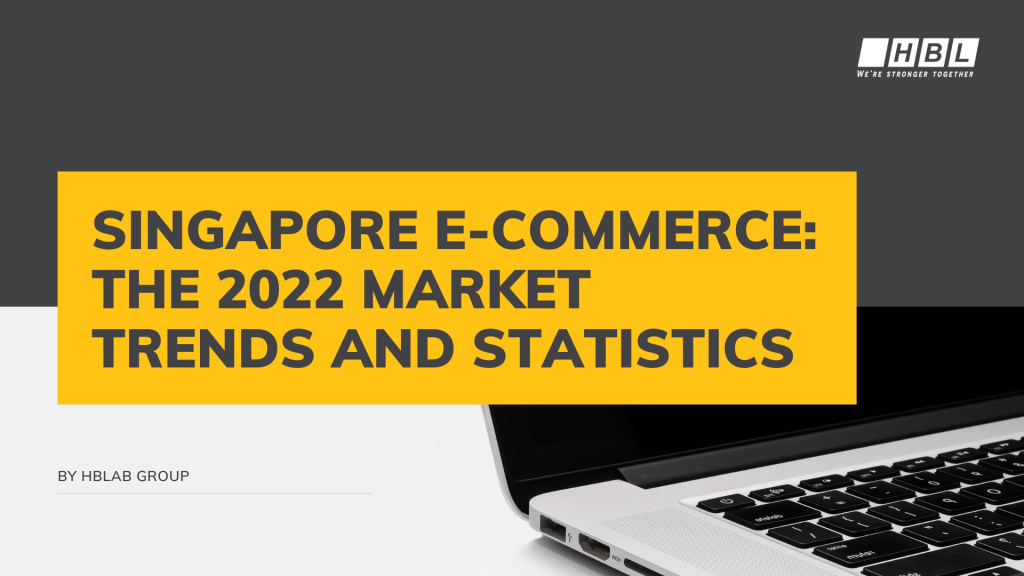The e-commerce market is constantly evolving, and this year has been no exception. Significantly, Singapore e-commerce market is forecast to rise to US$10 billion by 2026. In today’s blog post, we’ll explore Singapore as an emerging market, what you should know before expanding into the Southeast Asian region, and the upcoming e-commerce trends in Singapore.
Despite the COVID-19-related economic crisis, global e-commerce sales have increased, creating new prospects for businesses, advertisers, and digital marketers in the Southeast Asian market. According to eMarketer, the Southeast Asian industry is still expanding significantly. In particular, the region will experience the most remarkable global rise in digital buyers in 2022. Singapore was one of many Southeast Asian nations with solid development in retail eCommerce in 2021. They had 12.5% growth and have a tech-savvy populace, which indicates well for advertisers and publishers trying to enter the market.
The majority of retailers were forced to close as a result of COVID, which has increased the cost of e-commerce transactions. Retailers and customers have shifted to online shopping and selling as storefronts close. A couple of trends that have contributed to an increase in e-commerce have also been seen in Southeast Asia:
- Mobile phone availability has increased.
- Southeast Asian consumers’ financial situations have improved.
- E-commerce platforms are evolving to provide better user experiences.
According to eMarketer’s estimations, the Asia-Pacific area would generate over $4 trillion in eCommerce sales by 2024, accounting for 65.9% of the global industry at that time. While the expansion offers publishers and advertisers various affiliate marketing opportunities, Singapore stands out from the others.
Potential of Singapore as a Growing E-commerce Market
Singapore is ranked first among 40 nations in the Asia-Pacific area by the Index of Economic Freedom for 2022, with a freedom score of 84.4, ahead of New Zealand (#2) and Taiwan (#3). They remain the only nation in the world to be rated as having a free market economy in every index area, placing them much above regional and global averages.
They have a low unemployment rate with a business-friendly regulatory environment. They are one of the wealthiest countries in the world. According to the New Market Potential index, they topped China and Hong Kong in 2009 as the market with the most significant potential for US businesses. To identify which nations are emerging markets, the index is based on a wide range of market potential factors, such as:
- Market growth rate
- Market intensity
- Market Consumption
- Economic freedom
- Country risk
An emerging market is distinct from emerging industries. An emerging market is one of the world’s economies expanding quickly and undergoing rapid modernization. Singapore has taken steps to stimulate innovation, boost entrepreneurship, and retrain its workers in order to uphold its international reputation and increase its economic prosperity.
With the busiest port in the world, a sizable airport, superior infrastructure, and top-notch connections and networks, Singapore is a natural center for business in the Southeast Asia region. Although it is a small country with fewer than 5 million people, it serves as a reasonably neutral foundation and has a thriving and dynamic entrepreneurial culture.
As part of its Smart Nation strategy, the Singaporean government has supported numerous initiatives to develop tech-enabled solutions. Singapore might become a leader in the digital transition if the government puts forth persistent effort.
Despite the fact that every business is unique, the Southeast Asian market has seen a distinct trend emerge in affiliate marketing and e-commerce. Affiliate marketing has taken over as the preferred avenue for advertisers looking to increase their digital reach and communications as the world’s consumption shifts online.
To offset any activity that traditionally took place in retail locations, retailers in the regions are expanding their spending on affiliate programs. They are creating new alliances with publishers, influencers, affiliates, and other companies in an effort to reclaim that business. According to 86% of respondents to the Affiliate Summit research, affiliate partnerships are now either the first or second choice for online marketing. Everyone agreed that the epidemic increased relationships.
Singapore E-commerce Market Trends and Statistics in 2022
Singapore’s e-commerce revenue is expected to reach $7.29 billion in 2022, with user penetration reaching 59% in 2022 and a further 67.3% by 2025, according to Statista. Several vital data on the growth of e-commerce in Singapore provide insight into the industry’s future in the country.
Top E-commerce Product Categories in Singapore
Particular e-commerce product categories are highly well-liked in Singapore. Wednesday is the highest day for browsing to conversion, so this is the ideal day for advertisers and publishers to promote products and deals for hot categories. According to research from Janio Asia, the following product categories performed the best in e-commerce:
- Consumer electronics ($1.08 billion)
- Fashion and beauty ($999 million)
- Toys, DIY, and hobbies ($658 million)
- Personal care ($647 million)
Payment Methods
Credit cards are undoubtedly the most popular payment method for online purchases in Singapore. Particularly, credit cards always outperform debit cards when making purchases online. With 18.2% of Singaporeans now identifying them as their favorite payment method, digital wallets are on the rise and currently rank as the second most popular payment method in Singapore.
Purchases From Abroad
According to JP Morgan‘s 2020 e-commerce payments trend research, 35% of the Singaporean E-commerce industry is cross-border e-commerce, and 73% of online shoppers in Singapore have shopped from merchants overseas. Additionally, people prefer big, well-known e-commerce firms to small ones.
Tips for Expanding to Singapore
Despite having a limited geographic footprint, Singapore is a vibrant and significant e-commerce market in Southeast Asia. The following are some noteworthy factors that advertisers and publishers should take into account while extending into the region:
Corporate Culture
When expanding into Singapore, publishers and advertisers should be aware that Southeast Asian customers differ from those in the West. They communicate differently and speak different languages and cultures. Working with regional affiliate marketers is an excellent approach for advertisers and publishers to provide messaging acceptable to Singapore’s culture.
Although English is the official working language in Singapore, publishers who want to enter the Southeast Asian market should speak with local affiliates or educate themselves on the regional official languages, traditions, and cultural consumer subtleties.
Ultra-Fast Internet
A young, technologically knowledgeable population and superior internet technology are driving the expansion of online commerce in Singapore. The nation has a dependable and secure communications technology infrastructure, with fixed internet connections three times faster than the global average speed. These elements have led to a high level of internet and mobile penetration among its residents. Being one of the wealthiest countries in the world, its people have sizeable disposable income, which they primarily prefer to use for online purchases of expensive goods like gadgets.
Mobile-First Approach
Focusing on mobile commerce is highly advised due to the increased accessibility of mobile devices throughout the Southeast Asian market. The thirst for mobile technologies is intense in Singapore. Mobile phone owners spend an average of 45 hours a week online, making it one of the first nations to adopt tablets. Mobile commerce is firmly established and is expected to account for over half of all online sales by this year when its value is expected to exceed $4 billion. With 7 out of 10 citizens using social media sites, including Facebook, Youtube, Instagram, Twitter, Pinterest, and Google, the nation also has one of the world’s highest rates of social media use.
E-commerce marketplace and platform websites
A new wave of purchasing is dominating the Singaporean e-commerce business. Singaporean shoppers prefer to shop at online retailers and eCommerce platforms like Lazada, Shopee, and Carousell since they offer a variety of goods. Advertisers and publishers ought to take into account these platforms as an essential component of their strategies because they provide a distinctive online shopping experience. Lazada, launched in 2011, is the original online retailer. With approximately 9 million visitors to the marketplace in 2019, they are regarded as Southeast Asia’s Amazon and a significant online buying destination. E-commerce platforms offer a singular chance to instantly and strategically connect with Singapore consumers who differ from those in Western nations.
Wrapping up
Singapore is unquestionably a developing market for digital goods. The prospects for advertisers and publishers to reach an audience in Southeast Asia are difficult to ignore, given the region’s youthful, expanding middle class, high discretionary income, and rapid adoption of mobile e-commerce. Expanding to existing platforms and cutting-edge technologies will appeal to the curious customer when extending into Singapore.




